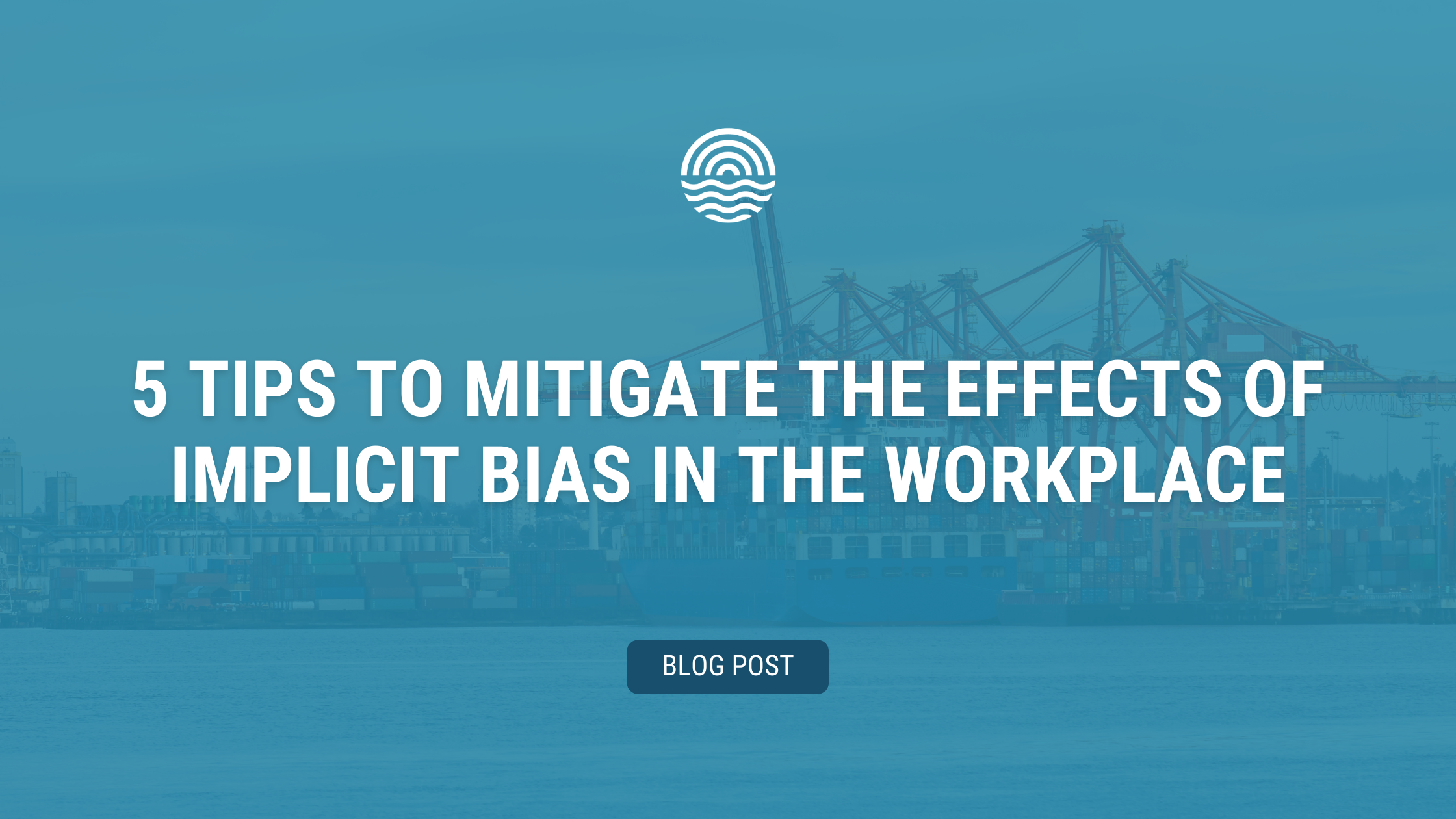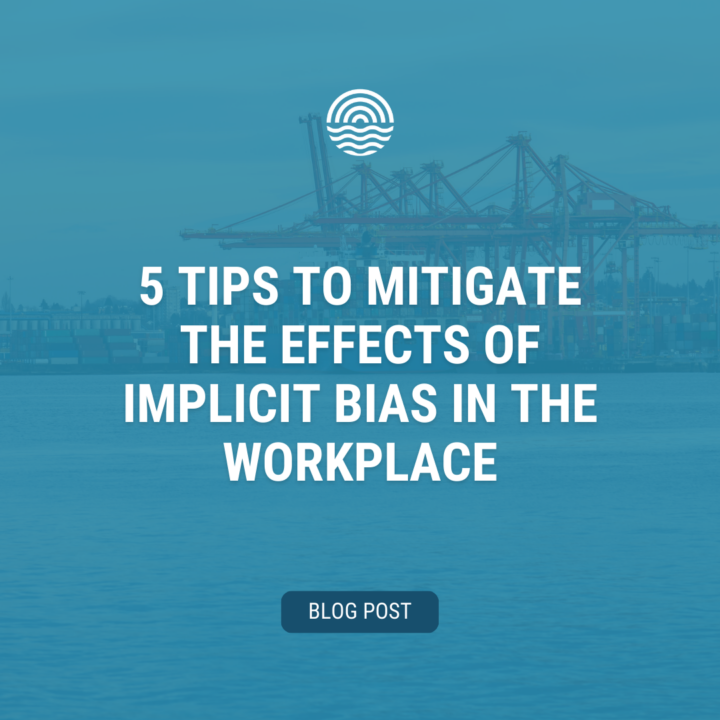
BLOG POST
5 Tips to Mitigate the Effects of Implicit Bias in the Workplace
Despite our best intentions, biases can inadvertently shape our interactions with others, potentially hindering the creation of a truly inclusive environment.
In this blog post, we explore implicit bias, its prevalence in the workplace, common types of bias that may unknowingly impact professional settings, and 5 actionable tips to mitigate the impacts of implicit bias.
By understanding where and how bias can manifest, we can take meaningful steps toward fostering a more inclusive and equitable workplace for everyone.
What is implicit bias?
Implicit bias refers to the attitudes or stereotypes that affect our understanding, actions, and decisions in an unconscious manner. These biases are automatic and unintentional, often influenced by societal stereotypes and cultural conditioning. Unlike explicit biases, which are conscious and deliberate, implicit biases operate at a subconscious level and can impact various aspects of our behaviour.
What are the most common types of bias?
There are several types of implicit bias, each rooted in different societal and cultural factors. Some common types include:
- Gender bias: Reflects preconceived notions or stereotypes associated with gender roles. For example, assuming that certain professions are more suitable for a specific gender.
- Racial bias: Involves unconscious associations and stereotypes related to race or ethnicity.
- Age bias: Relates to implicit stereotypes or attitudes based on a person’s age.
- Appearance bias: Involves unconscious judgments based on a person’s looks, such as hair colour, weight, or height.
- Confirmation bias: The tendency to seek out and interpret new information in a way that confirms your own pre-existing views and beliefs.
- Affinity bias: Refers to the tendency to favour individuals who share similar characteristics, backgrounds, or interests.
- Implicit association with ability: Involves biases related to perceived abilities or skills based on factors such as race, gender, or age.
- Cultural bias: Reflects biases based on cultural background or nationality.
These biases can shape our perceptions and actions, often influencing decisions in subtle and unintentional ways. Recognizing and addressing implicit biases is essential for fostering inclusivity and promoting fair treatment in workplaces and beyond.
Where might implicit bias appear within my organization?
In the dynamic environment of the workplace, it’s crucial to pinpoint areas where implicit bias might linger. Some common areas where bias may be prevalent include:
- Hiring and recruitment: Unconscious biases can subtly influence decisions in the hiring process, from resume screening to interview evaluations. It’s essential to be aware of the types of biases that exist and ensure that all candidates are evaluated fairly based on their qualifications.
- Performance evaluations: Implicit bias may seep into performance appraisals, affecting assessments of employees’ contributions. Leaders should strive for objectivity, focusing on concrete achievements rather than (unintentional) personal preferences.
- Leadership and decision-making: Leadership decisions, including strategic choices and resource allocation, may be influenced by biases. Additionally, a lack of diversity at the decision-making level has the potential to contribute to systemic bias within the organization.
How can I mitigate the impact of implicit bias in my workplace?
Mitigating bias in the workplace is crucial as it fosters diversity and inclusion, leading to improved team performance, enhanced innovation, and greater employee engagement, ultimately contributing to a positive organizational culture and helping your business thrive!
Let’s explore 5 tips to address, prevent, and mitigate the impact of implicit bias:
- Ongoing training and awareness: Regularly conduct training sessions at all organizational levels to raise awareness about implicit bias. Encourage open discussions within your team to help increase collective consciousness and understanding.
- Structured decision-making processes: Implement structured processes in hiring, promotions, and evaluations. Clearly defined criteria and evaluation metrics can help mitigate the impact of bias, ensuring a fair and consistent approach.
- Feedback and accountability: Foster a culture of constructive feedback and hold individuals accountable for addressing bias. Encourage employees to provide feedback on processes and behaviours that may perpetuate bias via anonymous surveys or other feedback mechanisms.
- Inclusive leadership development: Invest in leadership development programs that emphasize inclusivity. Equip leaders with the skills to navigate diverse teams, understand different perspectives, and lead by example in creating an inclusive culture.
- Review and revise policies: Regularly review organizational policies to ensure they are free from bias. Address any policies that may inadvertently contribute to inequity within your workplace.
Final Thoughts
Navigating implicit bias and fostering DEI is an ongoing journey.
Recognizing that biases exist, and actively working to address them, is the first step toward creating a workplace where everyone feels valued and included. This ongoing commitment to DEI is a dynamic process that requires continuous learning, adaptation, and a collective dedication to creating a culture that thrives on diversity and equality.
Actively working to address implicit bias enables us to collectively lay the groundwork for a future where diversity and equity drive innovation and success, both within our waterfront industry and in the communities we serve.


